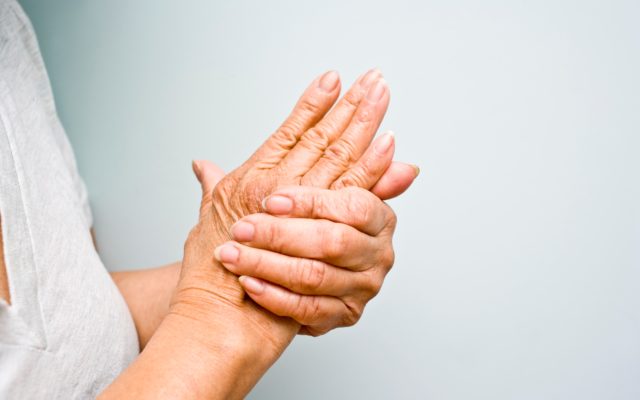
Keeping PACE – Enjoy the Fall without the falls
Written By Ryan Miller, Senior Care Partners PACE
The Fall season in Michigan is beautiful. The colors on the trees are changing. The smell of pumpkin spice is in the area. This month we are talking about another type of fall. I turned to Tracy Winnie, PT, to learn more about fall prevention. Tracy is the Clinical Manager of Outpatient Rehabilitation at Oaklawn Hospital.
RYAN: What are some common reasons or causes for falls for aging adults?
TRACY: Falls are a leading cause of injury and hospitalization amongst older adults. According to the Center for Disease Control, one out of three adults 65 and older falls each year. This number is likely to be higher considering many falls are unreported. There are many common problems related to falls and can include the following:
- Problems with mobility/walking
- Taking 4 or more medications
- Foot problems or unsafe footwear
- Blood pressure dropping with standing up/dizziness
- Vision problems
- Tripping hazards in the home
- Vestibular disorders
- Chronic conditions including arthritis, stroke, incontinence, diabetes, Parkinson’s, and dementia.
- Fear of falling
RYAN: What precautions could be taken in the home to minimize risk of falls?
TRACY: There are many things that can be done at personally to minimize the risk for falls. Performing regular exercise that specifically focuses on leg strength and improving balance can greatly reduce fall risk. If you get dizzy when standing too quickly, it may benefit you to get up slowly after sitting or lying down. It is best to avoid going barefoot or wearing loose slippers. It is a good idea to have regular vision checks. You can also ask your doctor or pharmacist to review your medications, especially if you take multiple medications, to see if there are any that increase dizziness.
People can also make efforts to make their home safer. Some things you should ask yourself when you look at your home are:
- Is there furniture that I need to walk around?
- Do I have throw rugs that I need to remove or use double sided tape on?
- Is there clutter to pick up on the floor?
- Do I have extension cords that could trip me?
- Is my stairway well-lit and free of clutter?
- Are my steps loose or uneven?
- Do I have a non-slip mat on my shower floor?
- Are things too high on my shelves in the kitchen?
- Is my step stool steady?
- Do I have grab bars?
- Do I have a lamp near my bed or a night light?
- Is the path from my bedroom to bathroom clear?
General safety tips include keeping emergency numbers in large print near each phone, putting a phone near the floor in case you fall and can’t get up or wearing an alarm device to alert a company that you need help sent.
RYAN: Are there exercises or activities that could help reduce the risk of falls?
TRACY: We know a lot more about older adults and their need to exercise. Regular exercise is essential for healthy aging and is safe for people of all age groups. Regardless of their health and physical abilities, older adults can gain a lot by staying physically active. Even if you have difficulty standing or walking, you can still exercise and receive the benefits from the increased activity. Physical activity can benefit every area of your life, including:
- Helping to maintain and improve your physical strength and fitness.
- Helping to improve your ability to do the things you want to do.
- Help improve your balance.
- Helping to manage and prevent diseases like diabetes, heart disease, breast and colon cancer, and osteoporosis.
- Helping to reduce feelings of depression. Exercise may improve mood and overall well-being and may improve or maintain some aspects of cognitive function, such as your ability to shift quickly between tasks, plan an activity, and ignore irrelevant information.
There are many different types of exercise that can be beneficial, but it is a good idea to focus on leg strength and balance skills to address fall risk. A physical therapist can be a good source of safe exercise techniques. Water based exercise may also be beneficial for strengthening. Senior Centers often have exercise classes or equipment available.
RYAN: Are there safety/assistive devices or equipment that could help protect against falling?
TRACY: If you feel imbalance in your daily life or have a history of falls, you may want to consult with your doctor or physical therapist regarding need for an assistive device. This may come in the form of a cane or a walker. It can be especially helpful to use a device when waking at night for activities such as using the bathroom to prevent falls while rushing in a dark room.
RYAN: If someone has had multiple falls, what should they do or who should they contact?
TRACY: If you or a loved one is having problems with falls, it would be advisable to speak to your doctor so they can help assess the cause of falls. They may refer you to a physical therapist to help with physical factors and education that can decrease your risk of falls.
Thank you to Tracy Winnie, PT, and Oaklawn Hospital Outpatient Rehabilitation for sharing this month and for all they do for our community. The information provided in this article is directed to a general audience for educational purposes. Please consult with your healthcare provide if you have concerns or questions regarding falls and fall prevention.
Credit: Ryan Miller, Senior Care Partners PACE

